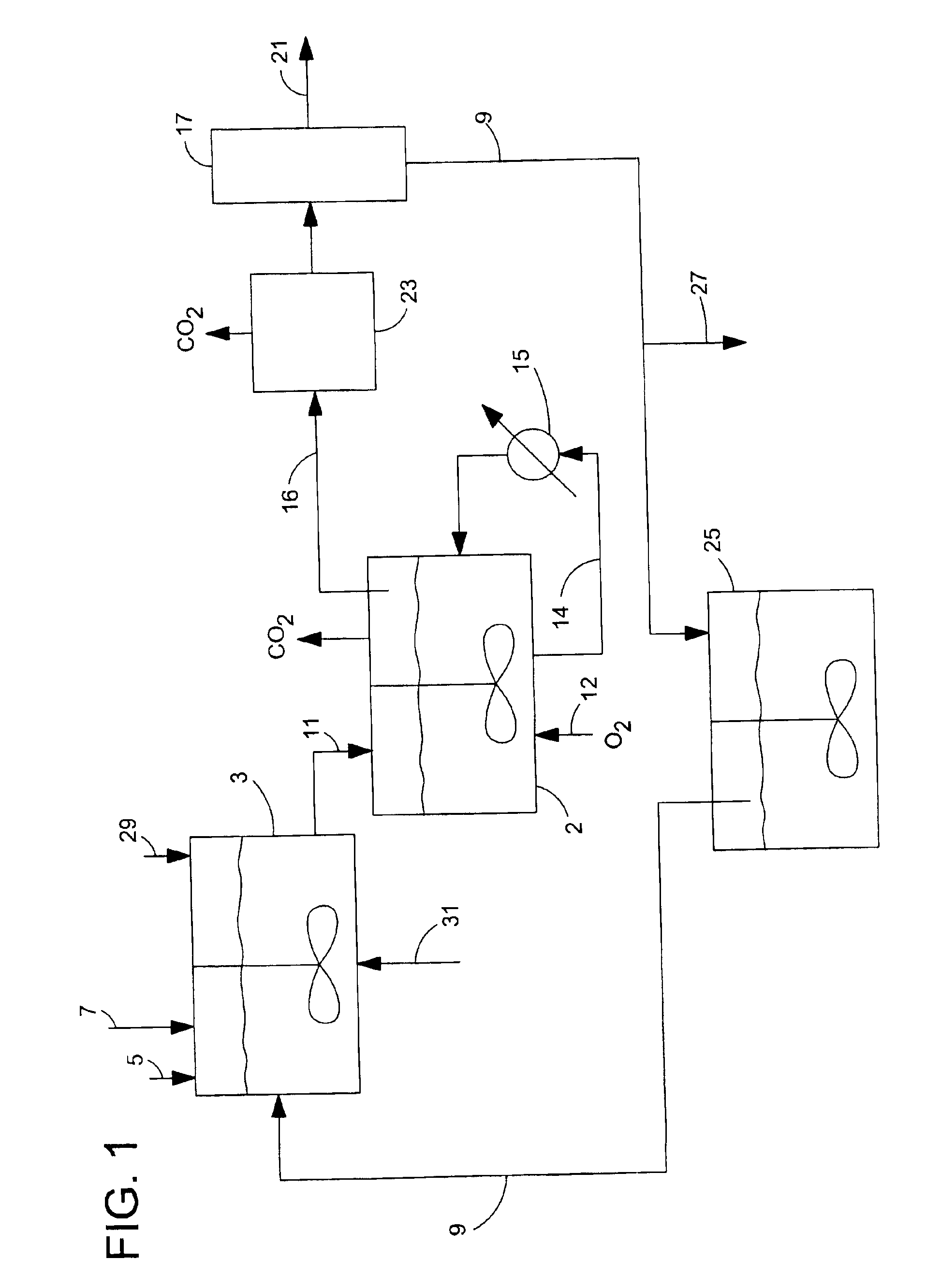De-oxygenation treatment for noble metal on carbon catalysts used in liquid phase oxidation reactions
a carbon catalyst and liquid phase oxidation technology, applied in the direction of group 5/15 element organic compounds, chemical instruments and processes, organic chemistry, etc., can solve the problems of reducing the yield of n-(phosphonomethyl)glycine, undesirable formaldehyde in the reaction product mixture resulting from oxidative cleavage of an n-(phosphonomethyl)iminodiacetic acid substrate, and improving the stability and resistance to noble metal leaching. ,
- Summary
- Abstract
- Description
- Claims
- Application Information
AI Technical Summary
Benefits of technology
Problems solved by technology
Method used
Image
Examples
example 1
[0054]An experiment was conducted to determine the effect of nitrogen sparging on dissolved oxygen levels in aqueous systems. Deionized water (300 mL) at 80° C. was placed in a round-bottom flask provided with a magnetic stirrer. Nitrogen gas at 200 cm3 / min was sparged into the stirred deionized water at atmospheric pressure through a subsurface dip tube. Dissolved oxygen concentration in the deionized water, in ppm, was measured during nitrogen sparging using a detection apparatus from Ocean Optics, Dunedin, Fla., USA (LS-450 blue LED light source connected to a fibre-optic cable with a ⅛ inch (3.2 mm) OD 10 inch (25.4 cm) long stainless steel probe and an Ocean Optics S2000-FL spectrometer). Results are reported in Table 1 below.
[0055]
TABLE 1Time (min)ppm O2Time (min)ppm O2Time (min)ppm O20.12.033.52.497.01.710.52.134.02.517.50.981.02.274.52.528.00.521.52.375.02.558.50.192.02.465.52.539.00.0 2.52.426.02.56——3.02.466.52.82——
example 2
[0056]An experiment was conducted to determine the effect of nitrogen sparging on dissolved oxygen levels in an aqueous catalyst slurry comprising a noble metal on carbon catalyst. The catalyst had previously been used in about 490 batch oxidation reactions in which N-(phosphonomethyl)iminodiacetic acid was oxidized to N-(phosphonomethyl)glycine and originally contained about 5% by weight platinum and about 0.5% by weight iron on an activated particulate carbon support. The used catalyst (6.25 g) was slurried in about 300 mL of water in a pressure vessel provided with a stirrer. Oxygen was sparged into the stirred catalyst slurry at about 80° C. through a subsurface dip tube until the pressure in the vessel reached about 15 psig. The pressure was maintained at 15 psig for about 5 minutes. Thereafter, the stirred slurry was sparged at atmospheric pressure with a flow of 200 cm3 / min of nitrogen. Dissolved oxygen concentration in the slurry was measured during nitrogen sparging using t...
example 3
[0058]Three series of batch N-(phosphonomethyl)iminodiacetic acid oxidation reactions were carried out to determine if a catalyst de-oxygenation treatment including nitrogen sparging of an isolated noble metal on carbon catalyst slurry between oxidation batches improved catalyst performance.
[0059]The oxidation reactions were conducted in a 1 liter autoclave (Engineers Autoclave) fitted with an agitator having an impeller located near the bottom of the autoclave. A subsurface dip tube fitted with a 1 inch fritted bayonet-type end situated just below the impeller was provided for introducing oxygen and nitrogen gases into the autoclave. The autoclave had an internal catalyst filter for separating the noble metal on carbon catalyst from the N-(phosphonomethyl)glycine product fraction withdrawn from the autoclave at the conclusion of the oxidation reaction.
[0060]Each reaction series included twenty (20) N-(phosphonomethyl)iminodiacetic acid batch oxidation reactions reusing the same cat...
PUM
 Login to View More
Login to View More Abstract
Description
Claims
Application Information
 Login to View More
Login to View More - R&D
- Intellectual Property
- Life Sciences
- Materials
- Tech Scout
- Unparalleled Data Quality
- Higher Quality Content
- 60% Fewer Hallucinations
Browse by: Latest US Patents, China's latest patents, Technical Efficacy Thesaurus, Application Domain, Technology Topic, Popular Technical Reports.
© 2025 PatSnap. All rights reserved.Legal|Privacy policy|Modern Slavery Act Transparency Statement|Sitemap|About US| Contact US: help@patsnap.com



